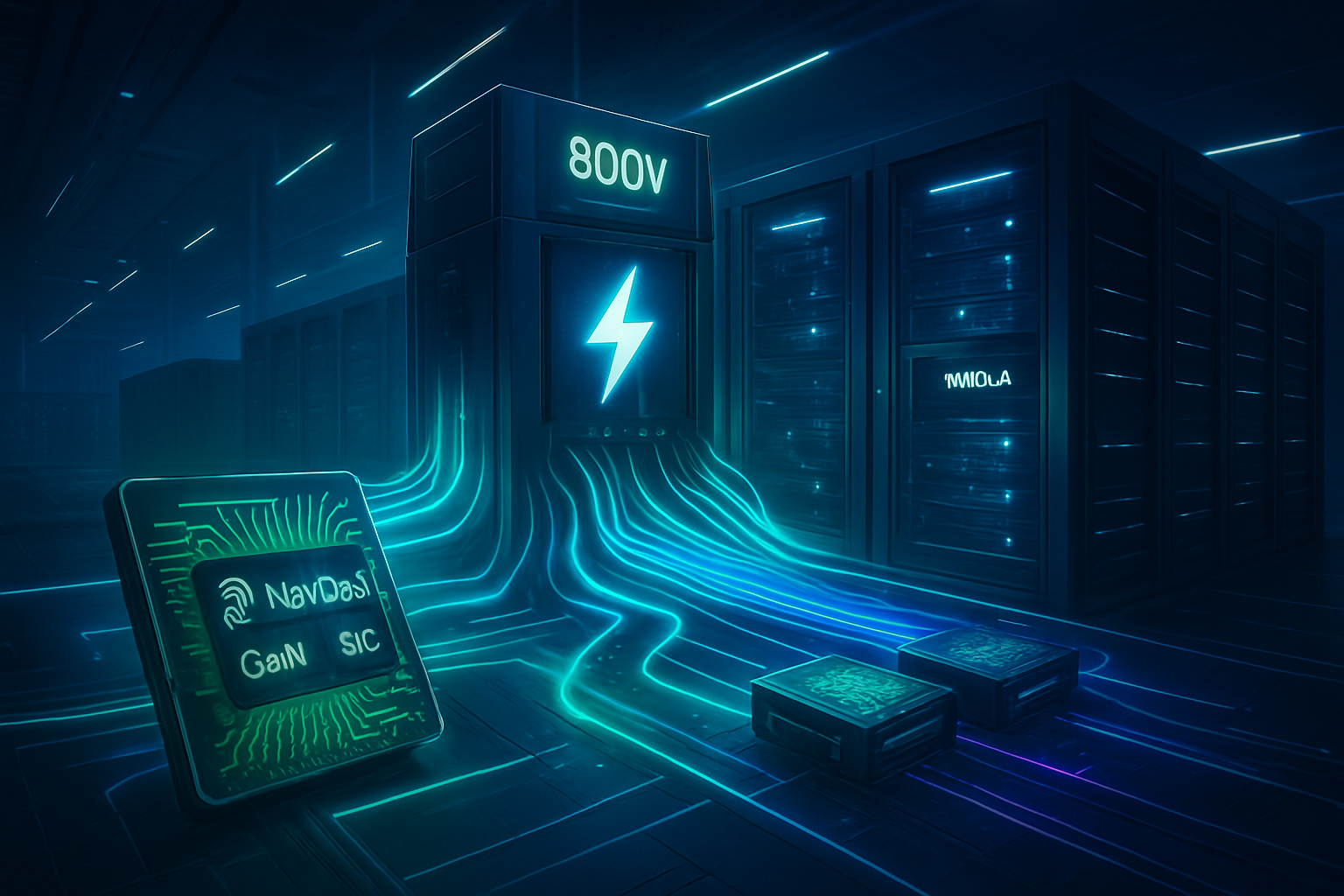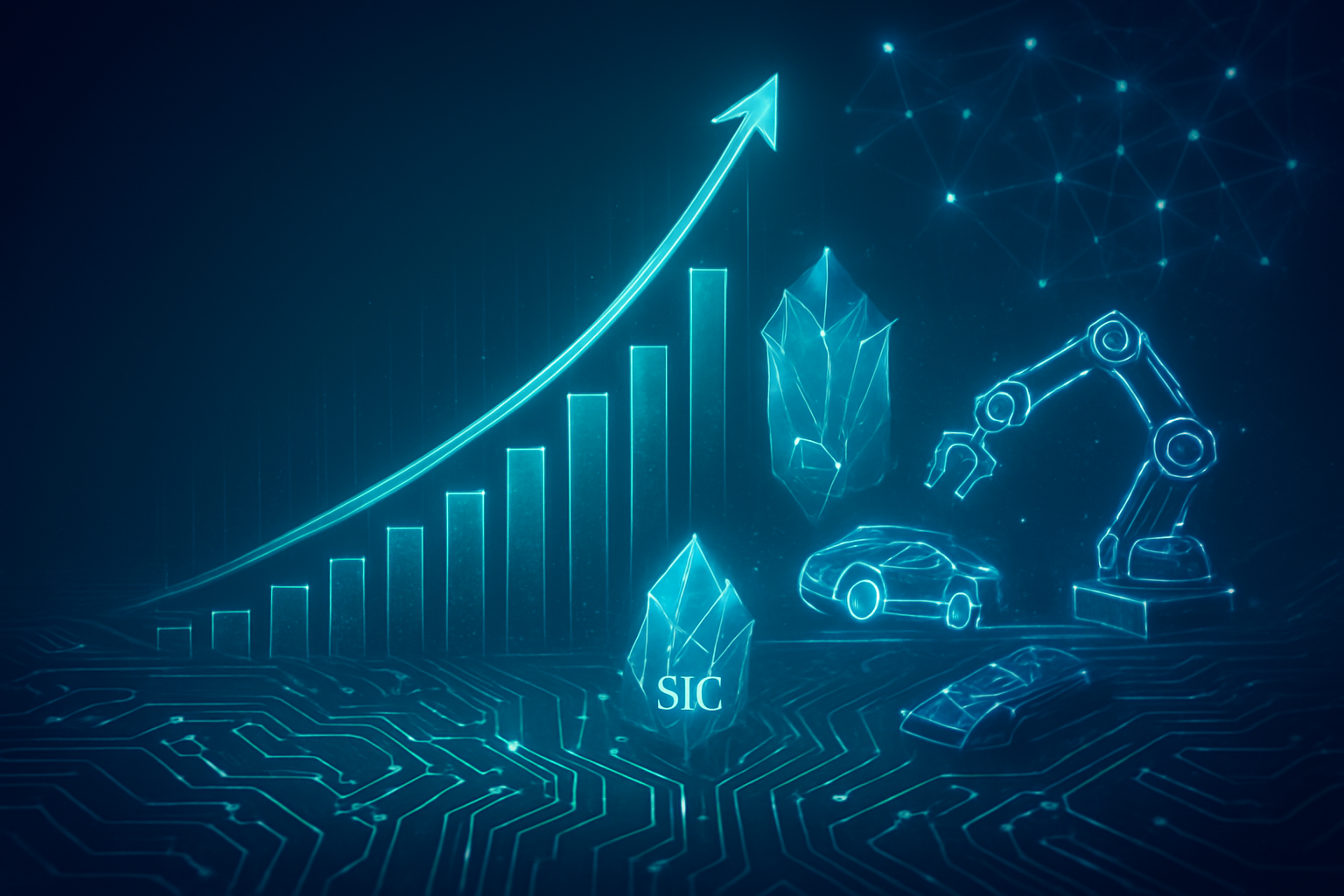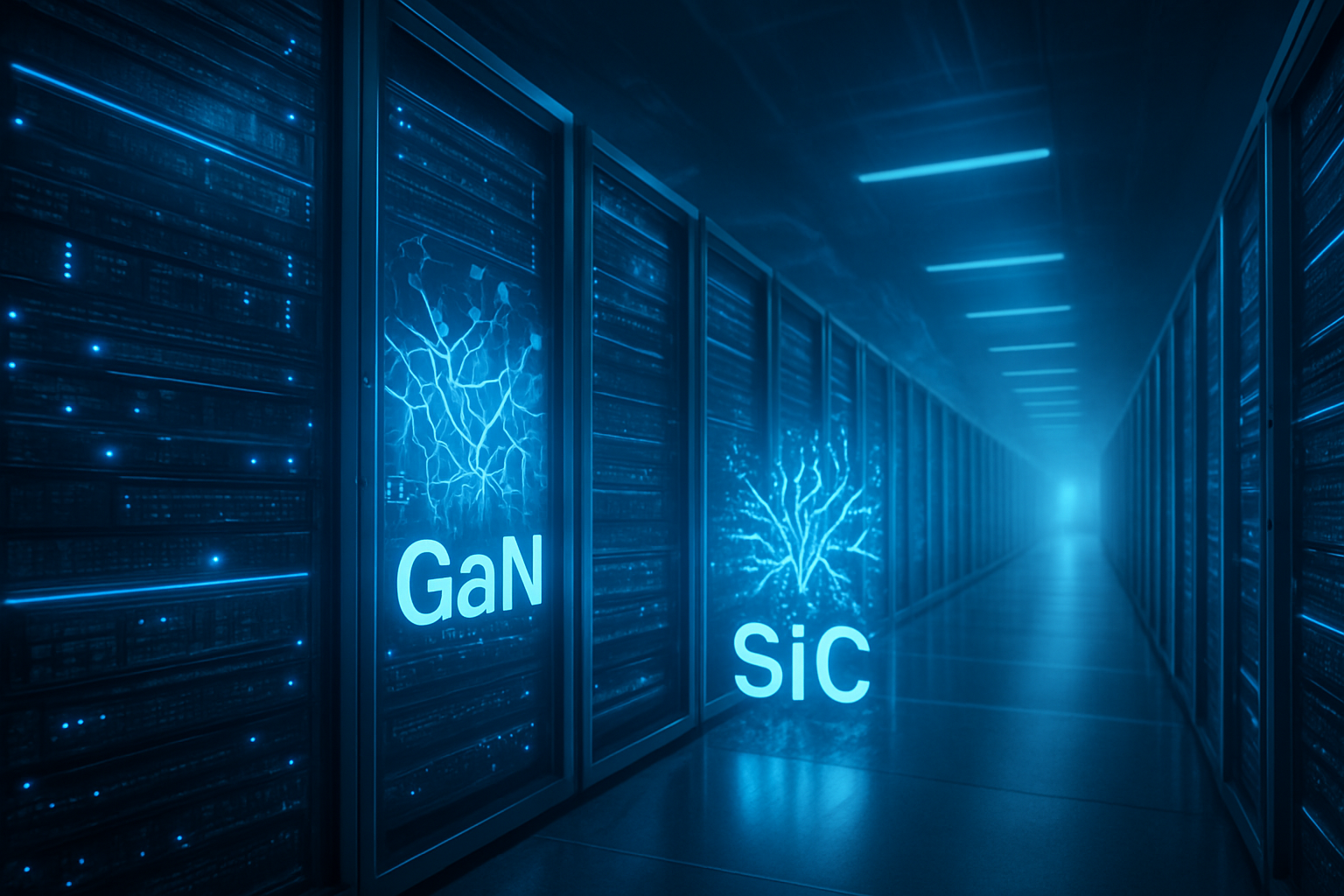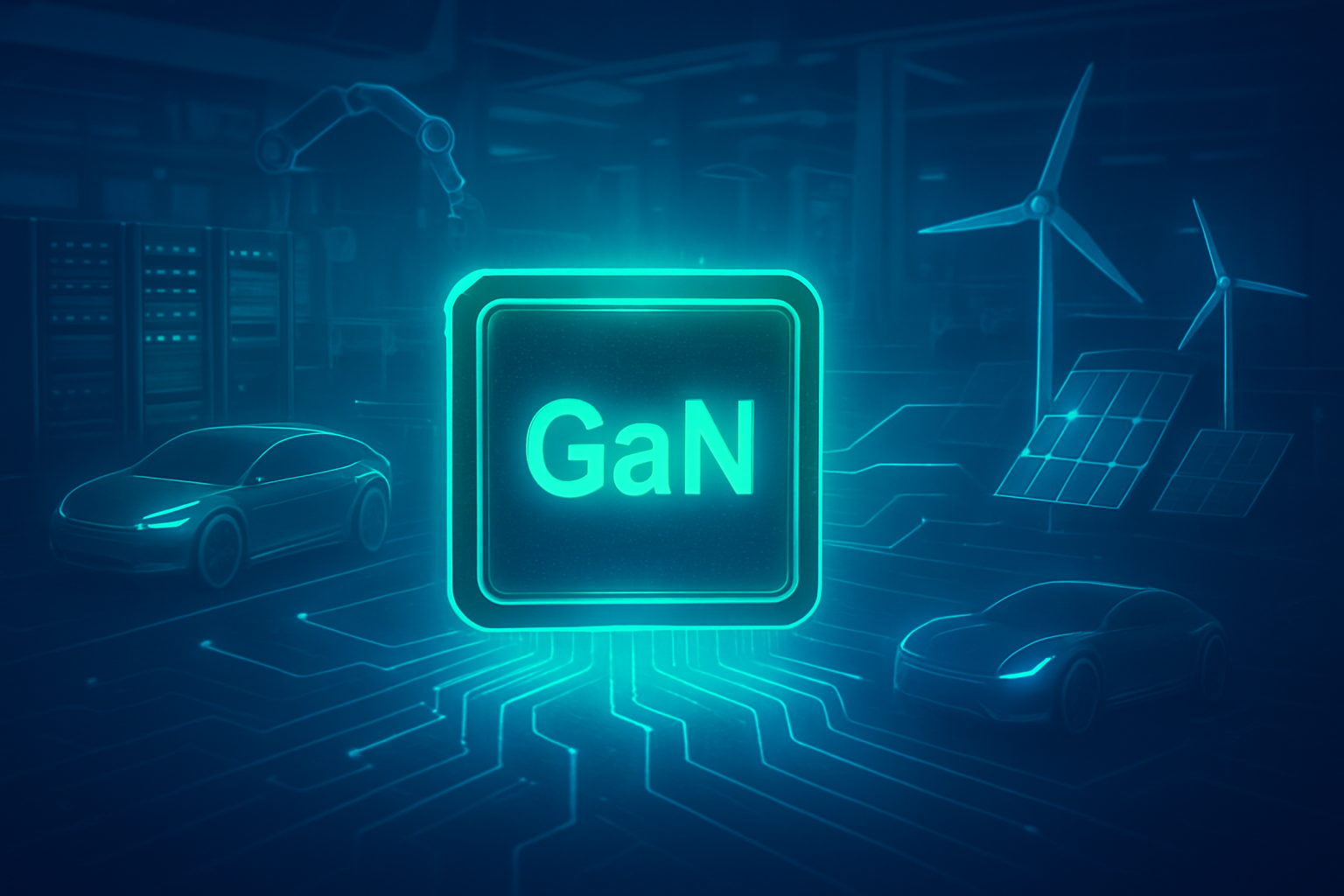The foundational material of the modern digital age, silicon, is rapidly approaching its inherent physical and performance limitations, heralding a pivotal shift in semiconductor fabrication. As the relentless demand for faster, smaller, and more energy-efficient chips intensifies, the tech industry is turning its gaze towards a promising new generation of materials. Gallium Nitride (GaN), Silicon Carbide (SiC), and two-dimensional (2D) materials like graphene are emerging as critical contenders to augment or even replace silicon, promising to unlock unprecedented advancements in computing power, energy efficiency, and miniaturization that are vital for the future of artificial intelligence, high-performance computing, and advanced electronics.
This paradigm shift is not merely an incremental improvement but a fundamental re-evaluation of the building blocks of technology. The immediate significance of these emerging materials lies in their ability to shatter silicon's long-standing barriers, offering solutions to challenges that silicon simply cannot overcome. From powering the next generation of electric vehicles to enabling ultra-fast 5G/6G communication networks and creating more efficient data centers, these novel materials are poised to redefine what's possible in the world of semiconductors.
The Technical Edge: Unpacking the Power of Next-Gen Materials
Silicon's dominance for decades has been due to its abundance, excellent semiconductor properties, and well-established manufacturing processes. However, as transistors shrink to near-atomic scales, silicon faces insurmountable hurdles in miniaturization, power consumption, heat dissipation, and breakdown at high temperatures and voltages. This is where wide-bandgap (WBG) semiconductors like GaN and SiC, along with revolutionary 2D materials, step in, offering distinct advantages that silicon cannot match.
Gallium Nitride (GaN), with a bandgap of 3.4 electron volts (eV) compared to silicon's 1.1 eV, is a game-changer for high-frequency and high-power applications. Its high electron mobility and saturation velocity allow GaN devices to switch up to 100 times faster than silicon, drastically reducing energy losses and boosting efficiency, particularly in power conversion systems. This translates to smaller, lighter, and more efficient power adapters (like those found in fast chargers), as well as significant energy savings in data centers and wireless infrastructure. GaN's superior thermal conductivity also means less heat generation and more effective dissipation, crucial for compact and reliable devices. The AI research community and industry experts have enthusiastically embraced GaN, recognizing its immediate impact on power electronics and its potential to enable more efficient AI hardware by reducing power overhead.
Silicon Carbide (SiC), another WBG semiconductor with a bandgap of 3.3 eV, excels in extreme operating conditions. SiC devices can withstand significantly higher voltages (up to 10 times higher breakdown field strength than silicon) and temperatures, making them exceptionally robust for harsh environments. Its thermal conductivity is 3-4 times greater than silicon, which is vital for managing heavy loads in high-power applications such as electric vehicle (EV) inverters, solar inverters, and industrial motor drives. SiC semiconductors can reduce energy losses by up to 50% during power conversion, directly contributing to increased range and faster charging times for EVs. The automotive industry, in particular, has been a major driver for SiC adoption, with leading manufacturers integrating SiC into their next-generation electric powertrains, marking a clear departure from silicon-based power modules.
Beyond WBG materials, two-dimensional (2D) materials like graphene and molybdenum disulfide (MoS2) represent the ultimate frontier in miniaturization. Graphene, a single layer of carbon atoms, boasts extraordinary electron mobility—up to 100 times that of silicon—and exceptional thermal conductivity, making it ideal for ultra-fast transistors and interconnects. While early graphene lacked an intrinsic bandgap, recent breakthroughs in engineering semiconducting graphene and the discovery of other 2D materials like MoS2 (with a stable bandgap nearly twice that of silicon) have reignited excitement. These atomically thin materials are paramount for pushing Moore's Law further, enabling novel 3D device architectures that can be stacked without significant performance degradation. The ability to create flexible and transparent electronics also opens doors for new form factors in wearable technology and advanced displays, garnering significant attention from leading research institutions and semiconductor giants for their potential to overcome silicon's ultimate scaling limits.
Corporate Race: The Strategic Imperative for Tech Giants and Startups
The shift towards non-silicon materials is igniting a fierce competitive race among semiconductor companies, tech giants, and innovative startups. Companies heavily invested in power electronics, automotive, and telecommunications stand to benefit immensely. Infineon Technologies AG (XTRA: IFX), STMicroelectronics N.V. (NYSE: STM), and ON Semiconductor Corporation (NASDAQ: ON) are leading the charge in SiC and GaN manufacturing, aggressively expanding production capabilities and R&D to meet surging demand from the electric vehicle and industrial sectors. These companies are strategically positioning themselves to dominate the high-growth markets for power management and conversion, where SiC and GaN offer unparalleled performance.
For major AI labs and tech companies like NVIDIA Corporation (NASDAQ: NVDA), Intel Corporation (NASDAQ: INTC), and Taiwan Semiconductor Manufacturing Company Limited (NYSE: TSM), the implications are profound. While their primary focus remains on silicon for general-purpose computing, the adoption of GaN and SiC in power delivery and high-frequency components will enable more efficient and powerful AI accelerators and data center infrastructure. Intel, for instance, has been actively researching 2D materials for future transistor designs, aiming to extend the capabilities of its processors beyond silicon's physical limits. The ability to integrate these novel materials could lead to breakthroughs in energy efficiency for AI training and inference, significantly reducing operational costs and environmental impact. Startups specializing in GaN and SiC device fabrication, such as Navitas Semiconductor Corporation (NASDAQ: NVTS) and Wolfspeed, Inc. (NYSE: WOLF), are experiencing rapid growth, disrupting traditional silicon-centric supply chains with their specialized expertise and advanced manufacturing processes.
The potential disruption to existing products and services is substantial. As GaN and SiC become more cost-effective and widespread, they will displace silicon in a growing number of applications where performance and efficiency are paramount. This could lead to a re-calibration of market share in power electronics, with companies that quickly adapt to these new material platforms gaining a significant strategic advantage. For 2D materials, the long-term competitive implications are even greater, potentially enabling entirely new categories of devices and computing paradigms that are currently impossible with silicon, pushing the boundaries of miniaturization and functionality. Companies that invest early and heavily in the research and development of these advanced materials are setting themselves up to define the next generation of technological innovation.
A Broader Horizon: Reshaping the AI Landscape and Beyond
The exploration of materials beyond silicon marks a critical juncture in the broader technological landscape, akin to previous monumental shifts in computing. This transition is not merely about faster chips; it underpins the continued advancement of artificial intelligence, edge computing, and sustainable energy solutions. The limitations of silicon have become a bottleneck for AI's insatiable demand for computational power and energy efficiency. Novel materials directly address this by enabling processors that run cooler, consume less power, and operate at higher frequencies, accelerating the development of more complex neural networks and real-time AI applications.
The impacts extend far beyond the tech industry. In terms of sustainability, the superior energy efficiency of GaN and SiC devices can significantly reduce the carbon footprint of data centers, electric vehicles, and power grids. For instance, the widespread adoption of GaN in data center power supplies could lead to substantial reductions in global energy consumption and CO2 emissions, addressing pressing environmental concerns. The ability of 2D materials to enable extreme miniaturization and flexible electronics could also lead to advancements in medical implants, ubiquitous sensing, and personalized health monitoring, integrating technology more seamlessly into daily life.
Potential concerns revolve around the scalability of manufacturing these new materials, their cost-effectiveness compared to silicon (at least initially), and the establishment of robust supply chains. While significant progress has been made, bringing these technologies to mass production with the same consistency and cost as silicon remains a challenge. However, the current momentum and investment indicate a strong commitment to overcoming these hurdles. This shift can be compared to the transition from vacuum tubes to transistors or from discrete components to integrated circuits—each marked a fundamental change that propelled technology forward by orders of magnitude. The move beyond silicon is poised to be another such transformative milestone, enabling the next wave of innovation across virtually every sector.
The Road Ahead: Future Developments and Expert Predictions
The trajectory for emerging semiconductor materials is one of rapid evolution and expanding applications. In the near term, we can expect to see continued widespread adoption of GaN and SiC in power electronics, particularly in electric vehicles, fast chargers, and renewable energy systems. The focus will be on improving manufacturing yields, reducing costs, and enhancing the reliability and performance of GaN and SiC devices. Experts predict a significant increase in the market share for these WBG semiconductors, with SiC dominating high-power, high-voltage applications and GaN excelling in high-frequency, medium-power domains.
Longer term, the potential of 2D materials is immense. Research into graphene and other transition metal dichalcogenides (TMDs) will continue to push the boundaries of transistor design, aiming for atomic-scale devices that can operate at unprecedented speeds with minimal power consumption. The integration of 2D materials into existing silicon fabrication processes, potentially through monolithic 3D integration, is a key area of focus. This could lead to hybrid chips that leverage the best properties of both silicon and 2D materials, enabling novel architectures for quantum computing, neuromorphic computing, and ultra-dense memory. Challenges that need to be addressed include scalable and defect-free growth of large-area 2D materials, effective doping strategies, and reliable contact formation at the atomic scale.
Experts predict that the next decade will witness a diversification of semiconductor materials, moving away from a silicon-monopoly towards a more specialized approach where different materials are chosen for their optimal properties in specific applications. We can anticipate breakthroughs in new material combinations, advanced packaging techniques for heterogeneous integration, and the development of entirely new device architectures. The ultimate goal is to enable a future where computing is ubiquitous, intelligent, and sustainable, with novel materials playing a crucial role in realizing this vision.
A New Foundation for the Digital Age
The journey beyond silicon represents a fundamental re-imagining of the building blocks of our digital world. The emergence of gallium nitride, silicon carbide, and 2D materials like graphene is not merely an incremental technological upgrade; it is a profound shift that promises to redefine the limits of performance, efficiency, and miniaturization in semiconductor devices. The key takeaway is clear: silicon's reign as the sole king of semiconductors is drawing to a close, making way for a multi-material future where specialized materials unlock unprecedented capabilities across diverse applications.
This development is of immense significance in AI history, as it directly addresses the physical constraints that could otherwise impede the continued progress of artificial intelligence. By enabling more powerful, efficient, and compact hardware, these novel materials will accelerate advancements in machine learning, deep learning, and edge AI, allowing for more sophisticated and pervasive intelligent systems. The long-term impact will be felt across every industry, from enabling smarter grids and more sustainable energy solutions to revolutionizing transportation, healthcare, and communication.
In the coming weeks and months, watch for further announcements regarding manufacturing scale-up for GaN and SiC, particularly from major players in the automotive and power electronics sectors. Keep an eye on research breakthroughs in 2D materials, especially concerning their integration into commercial fabrication processes and the development of functional prototypes. The race to master these new materials is on, and the implications for the future of technology are nothing short of revolutionary.
This content is intended for informational purposes only and represents analysis of current AI developments.
TokenRing AI delivers enterprise-grade solutions for multi-agent AI workflow orchestration, AI-powered development tools, and seamless remote collaboration platforms.
For more information, visit https://www.tokenring.ai/.








